Aldeburgh |
A small seaside town on the beautiful Suffolk coast notable for its shingle beach |
|
An Introduction to Aldeburgh in Suffolk |
Aldeburgh is a small seaside town on the beautiful East Suffolk Coast notable for its Blue Flag shingle beach and fisherman huts with freshly caught fish and seafood for sale. It was first mentioned in the Domesday book in 1086 and its name means 'the old defended place' probably in reference to a Roman strong point (fort) next to the River Alde, this structure along with much of the Tudor town, has now been lost to the sea.
In the 16th Century it was a thriving port and shipbuilding was the main trade, Sir Francis Drake's ships Greyhound and Pelican (renamed Golden Hind) were both built in Aldeburgh. The flag ship of the Virginia Company, the Sea Venture is also believed to have been built there in 1608. When the River Alde silted up and was unable to accommodate larger ships, the area went into decline and then survived as a fishing village until the nineteenth century, then becoming popular as a seaside retreat.
Aldeburgh is a great place for those wanting a tranquil seaside holiday with miles of shingle coastline and heath lands.
 |
You can walk your dog along the beach - suggest going north past the Scallop and towards Thorpeness. |
 |
There is plenty for children in Aldeburgh; for example let your kids view the Aldeburgh lifeboat up close at the lifeboat station. You might also get them to find the statue of 'Snooks' at the model yacht pool or the 'Scallop' sculpture on the beach. |
|
Aldeburgh Street Map |
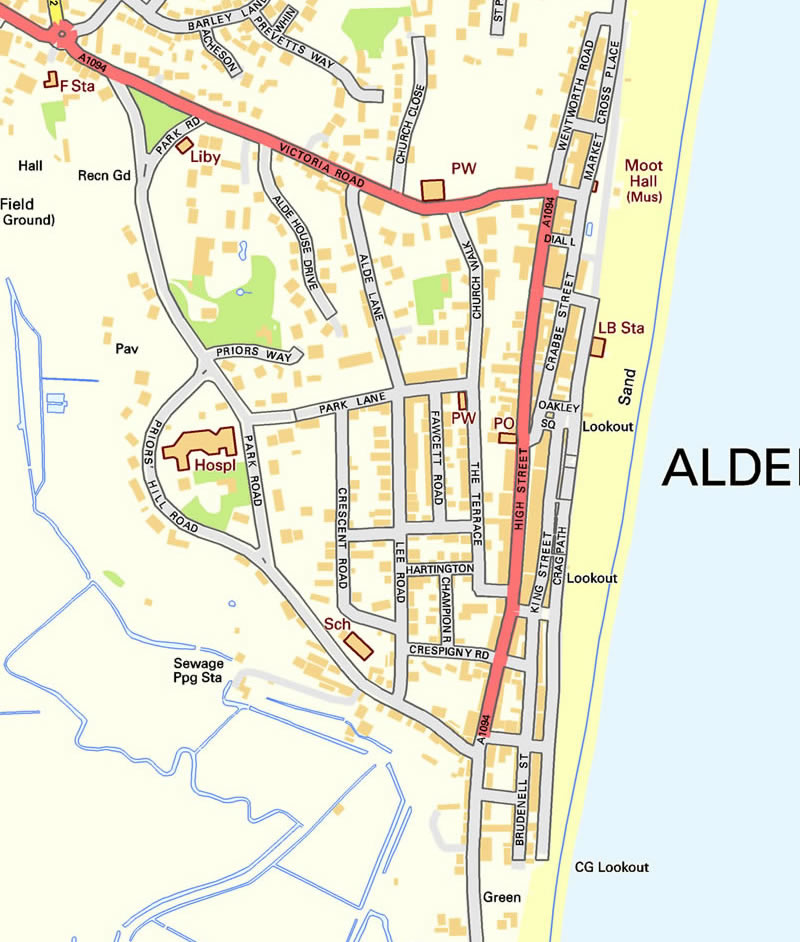 |
Aldeburgh Guided Picture Tour |
We start our tour of Aldeburgh on its famous pebble beach. The beach is steeply shelved and over the years has gradually been swept away by the power of the sea. Aldeburgh used to be a busy fishing and ship building centre, but now only a few fishing boats can still be seen on beach, hauled up after every trip. The best route for a walk is north along the beach towards Thorpeness, past the 'Scallop' (an unusual beach sculpture). |
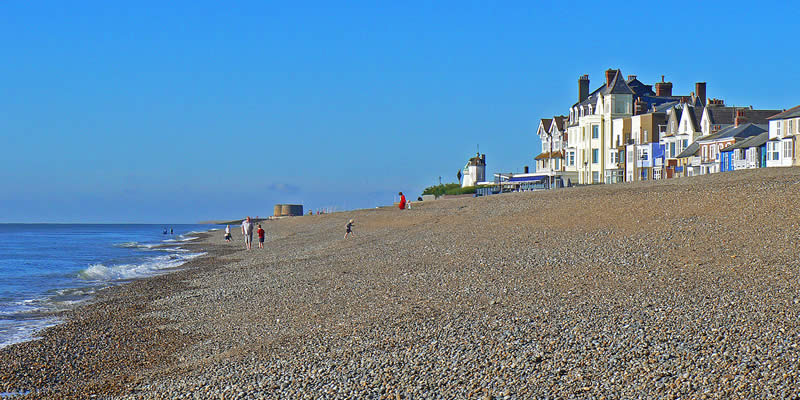
Aldeburgh Beach, consisting of pebbles |
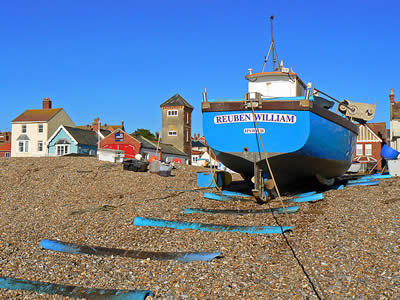
Fishing Boats hauled up the beach at Aldeburgh |
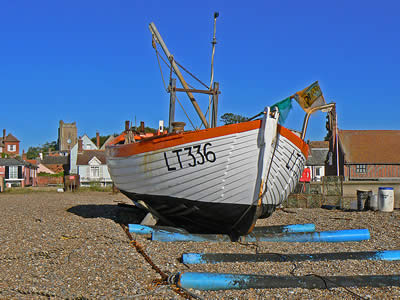
Aldeburgh Fishing Boat on the beach |
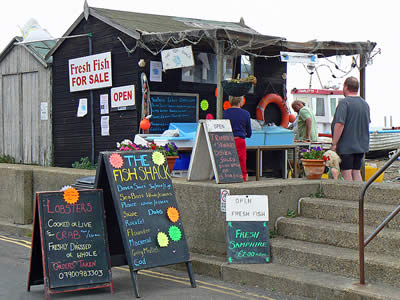
Fish for Sale on Aldeburgh Beach |
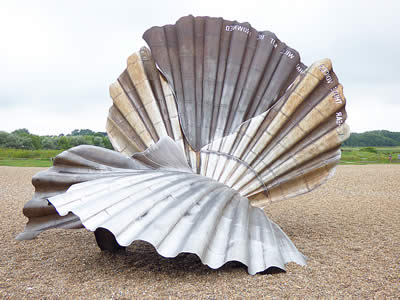
The Scallop sculpture on the beach (north end) |
At the back of the main beach is Aldeburgh Lifeboat Station. In its time, Aldeburgh has had many lifeboats, making many daring rescues. Today a hi-tec Mersey Class lifeboat is housed in a modern lifeboat house, with the lifeboat launched down the beach. The station is open to the public and is a popular attraction to visitors. |
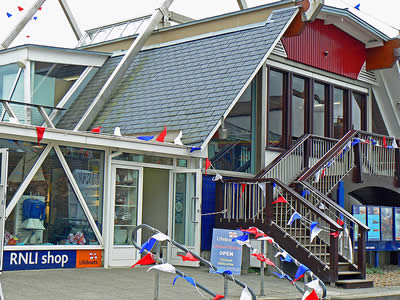
Aldeburgh modern RNLI Lifeboat Station |
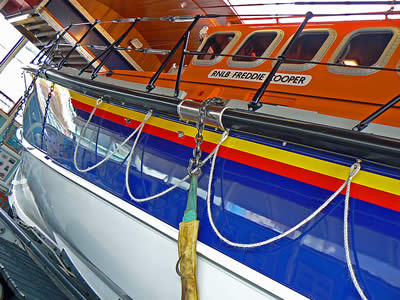
Aldeburgh Lifeboat |
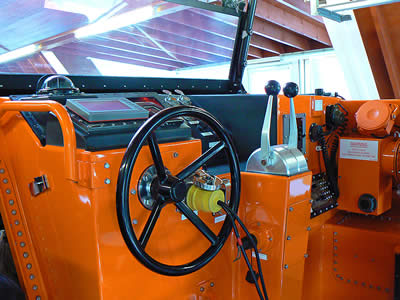
The controls of the lifeboat at Aldeburgh |
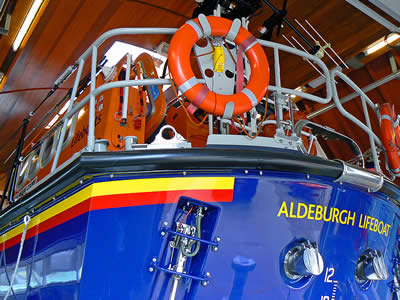
The stern of the lifeboat |

Clambering on the deck of the lifeboat at Aldeburgh |
History records that on December 7th 1899 the Aldeburgh lifeboat responded to distress signals and a crew of 18 manned the lifeboat, launching it into the teeth of an easterly gale and heavy rolling sea. In an effort to save others, the lifeboat unfortunately capsized and seven of the life-boatmen lost their lives. Acting Coxswain Charles Edward Ward was awarded a Silver Medal for the rescue of two of his comrades. There is a memorial to these 7 brave men in the churchyard of the parish church.  Click Here to view this memorial Click Here to view this memorial |
Aldeburgh Seafront is full of interesting buildings, each one telling their own story. Starting at the southern end, the Old Mill formerly ground flour for the town and is now a complex of flats. Next, we come to a pair of Lookout Towers, which were once owned by rival pilotage groups that provided shipping information via telegraph to Lloyds of London and the Admiralty. Towards the northern end is a model yacht pool, overlooked by a bronze dog called Snooks, who was the beloved dog of a well respected local doctor, who commissioned the statue in his memory. |
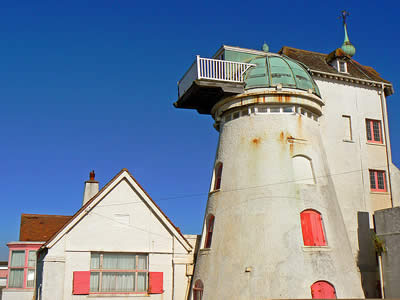
At one end of the seafront (south) is Aldeburgh Old Mill which once ground flour for the town |
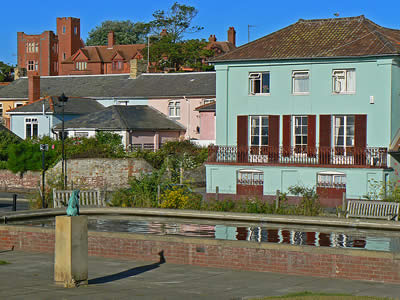
At the other end (north) you will find a model yacht pool, overlooked by "Snooks" |
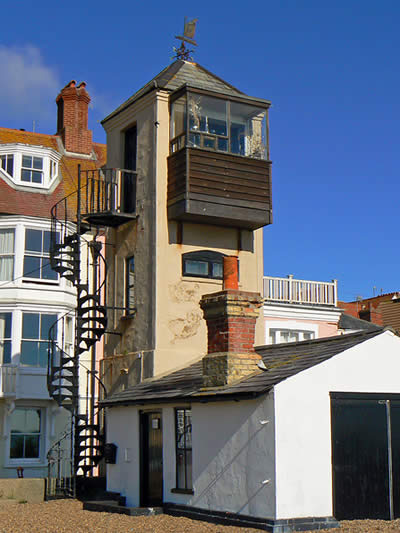
The South Lookout Tower, one of a pair |
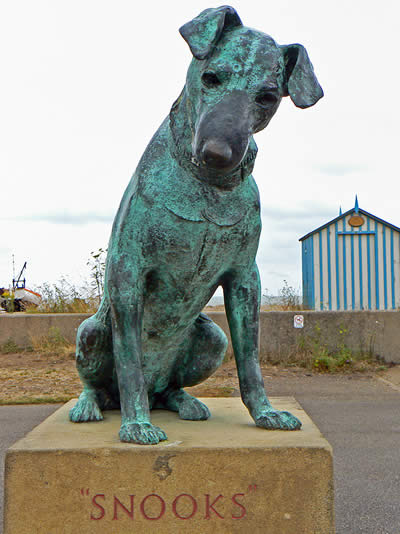
"Snooks" watching over Aldeburgh Model Yacht Pool |
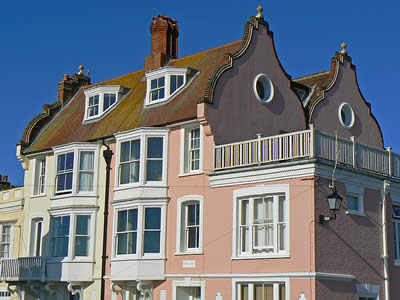
North Gable, a grand building with Dutch Gables |
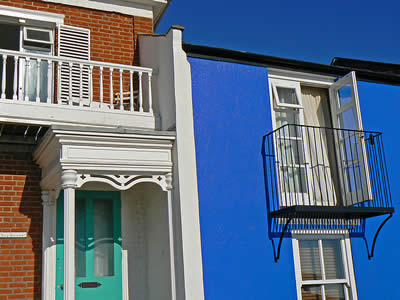
Cottages along the seafront at Aldeburgh |
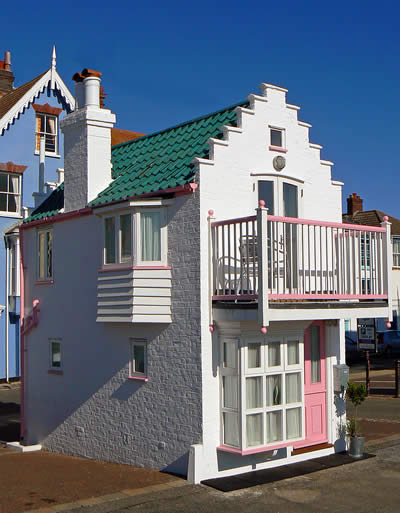
"Fantasia" - a curious one room cottage on the seafront |
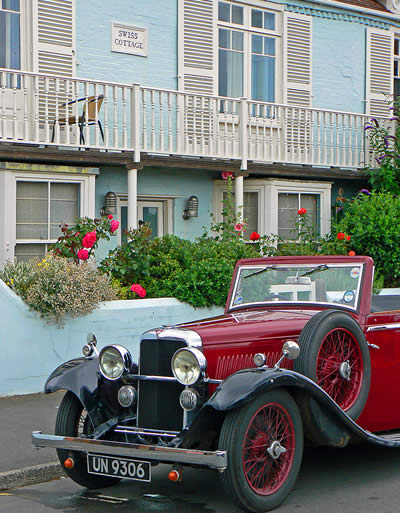
Swiss Cottage and beautiful traditional car |
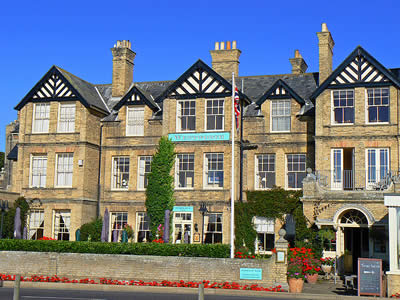
Aldeburgh Wentworth Hotel |
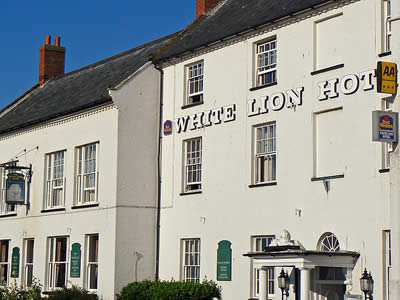
White Lion Hotel in Aldeburgh |
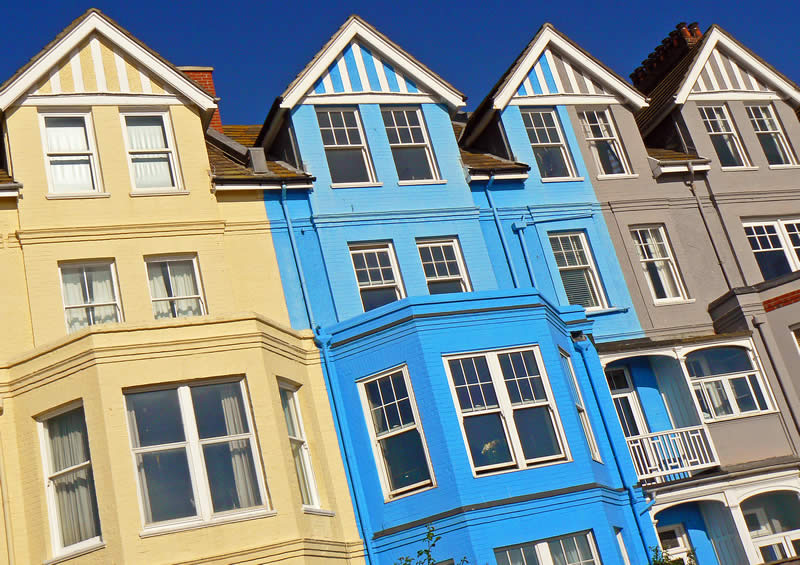
Colourful seafront terrace along the seafront |
One of the town's major landmarks is Moot Hall, a timber framed building which for the past 400 years has been the meeting place of Aldeburgh Town Council (the word Moot means meeting in Anglo-Saxon). The Town Clerk's office is still here and it also houses the Aldeburgh Museum. Moot Hall dates from the 16th century, however it was almost demolished during the 19th century, but then restored including the addition of 2 chimneys in 1854, copied from Hampton Court! Moot Hall used to stand in the middle of the town, but the gradual washing away by the power of the sea has brought it ever closer to waves. |
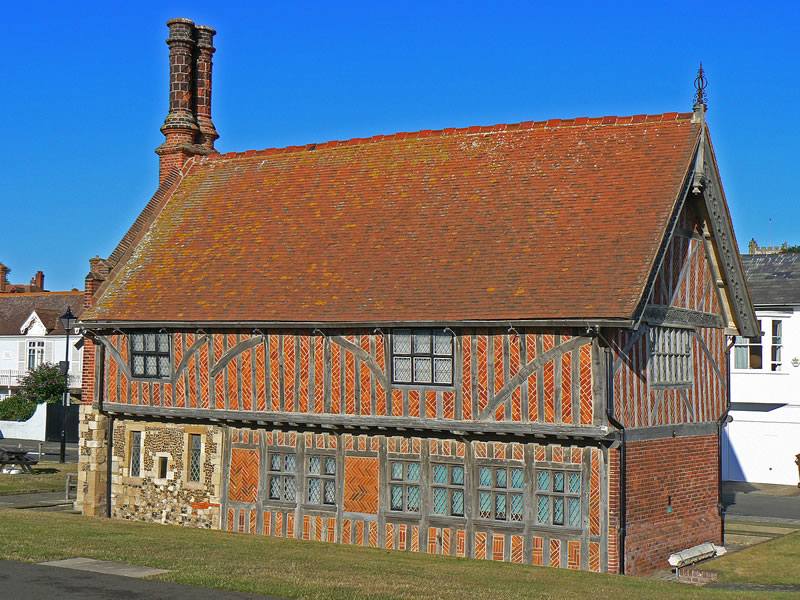
Aldeburgh Moot Hall |
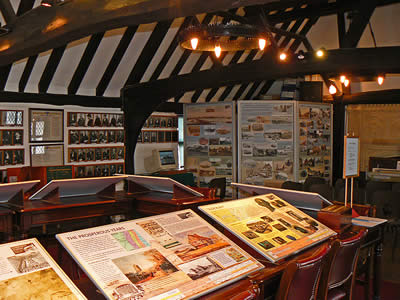
The Aldeburgh Museum, inside Moot Hall |
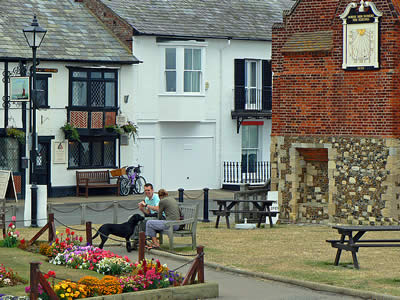
Relaxing on the seafront adjacent to Moot Hall |
Aldeburgh town centre is as popular as ever, with modern cafes, and craft shops replacing ironmongers and barbers from the previous generation; however you can still buy fresh bread from the bakery and browse books in the local book shop. The Aldeburgh Cinema has been screening films since 1924 and continues to show a regular programme of films and special events, supported by the local film club. |
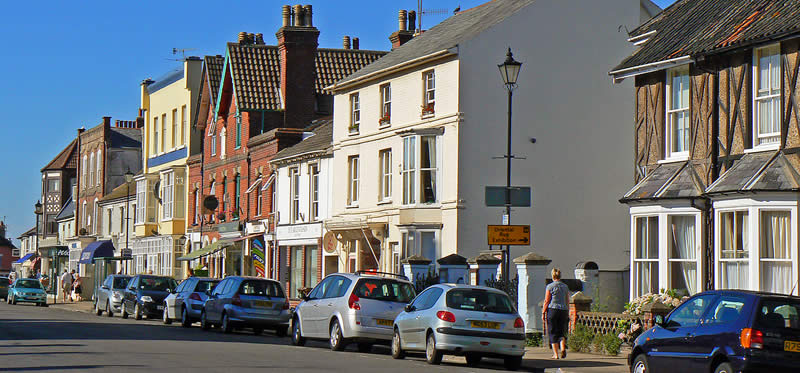
Aldeburgh High Street |
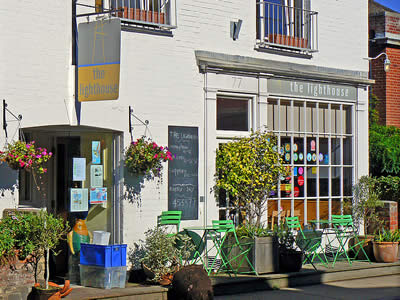
The Lighthouse Cafe and Restaurant |
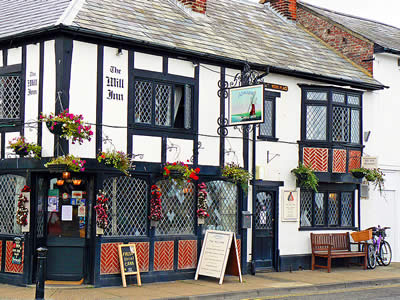
The Mill Inn |
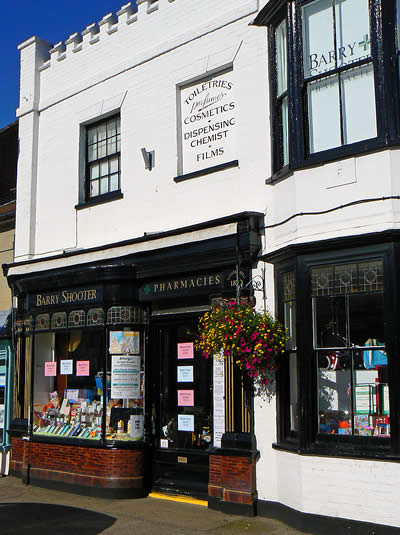
Barry Shooter Pharmacy and Dispensing Chemist |
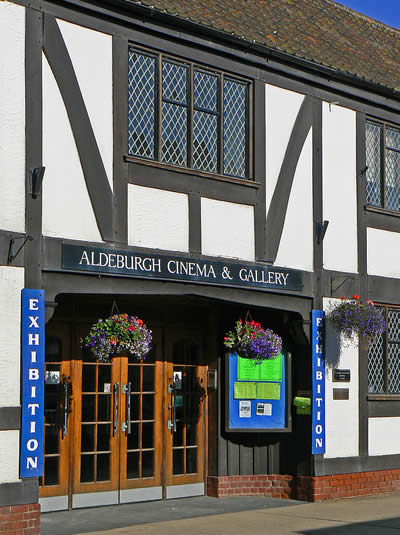
Aldeburgh Cinema and Gallery |
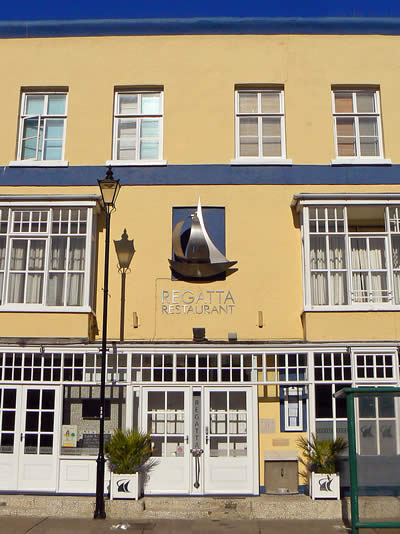
Regatta Restaurant, Aldeburgh High Street |
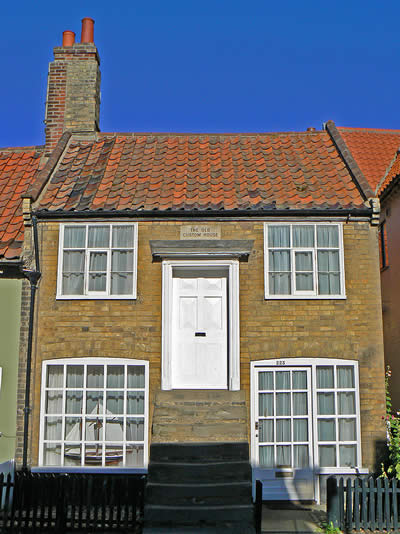
The Old Custom House in Aldeburgh High Street |
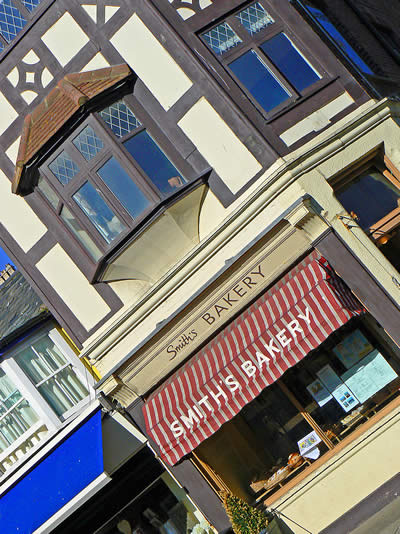
Smiths Bakery, Aldeburgh High Street |
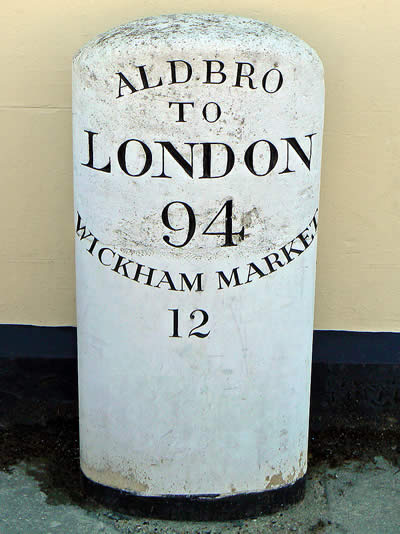
A mile marker in Aldeburgh High Street |
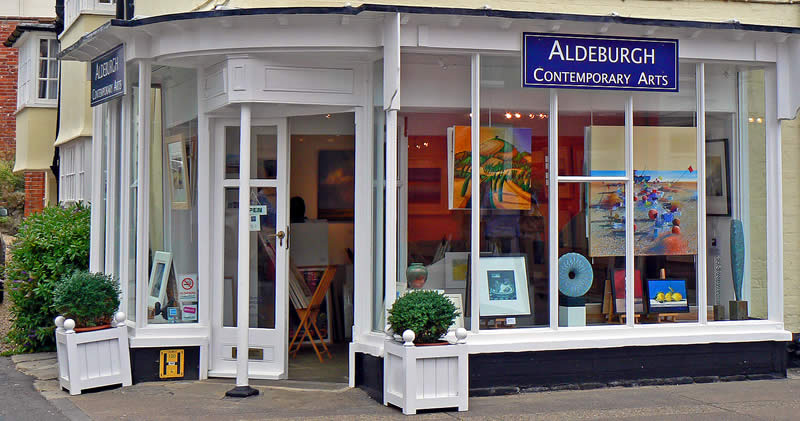
Aldeburgh Contemporary Arts in the High Street |
Although there are many excellent restaurants and pubs to be found in Aldeburgh, it is worthy to mention Aldeburgh's renowned fish and chip shops, which were described in The Times as "possibly the finest on the east coast" |
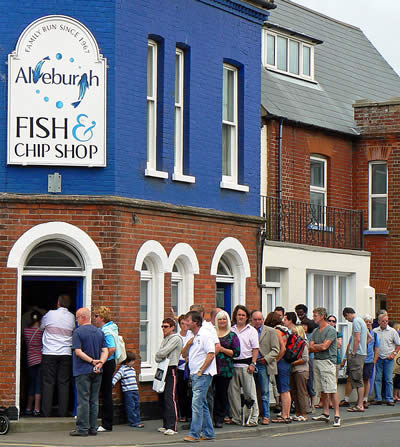
Queue outside Aldeburgh Fish and Chip Shop |
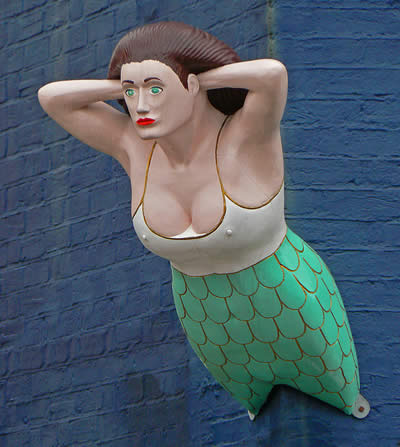
Above the door of the Golden Galleon Fish & Chip Shop! |
A flight of steps take us to Upper Aldeburgh. At the foot of the steps is a row of fisherman's cottages, with cobbled faces and adjacent is the town pump, manufactured in Saxmundham in 1840. From the top, you get good views over the town and out to sea. Immediately to the left is the Roman Catholic Church, dedicated to Our Lady and St Peter, and built to a vernacular style in 1930. It originally had a round tower, but this had to be taken down after an air raid in 1945. Church Walk links the Catholic Church with the Parish Church os St Peter and St Paul. This church stands nearer to the sea than any other in Suffolk and was important landmark for mariners. The tower dates from the 14th century, with the remainder of the church dating from around the mid-16th century. The church is famous for its churchyard, where the graves of various well known people can be found, including Benjamin Britten, the famous composer, conductor, violist and pianist. He died in 1976. |
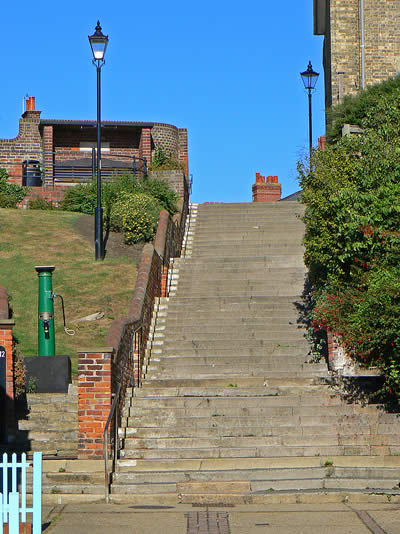
Steps up to upper Aldeburgh |
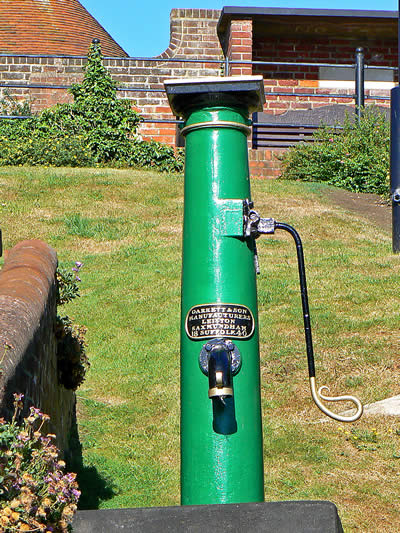
Aldeburgh Town Pump |
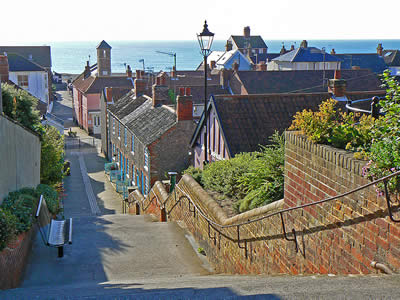
The view over Aldeburgh from the top of the steps |
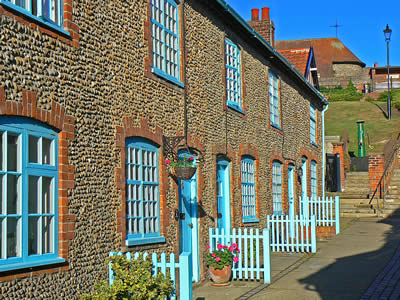
A row of Fisherman's Cottages at the foot of the steps |

Church Walk, the road linking the Roman Catholic Church with the Anglican Church |
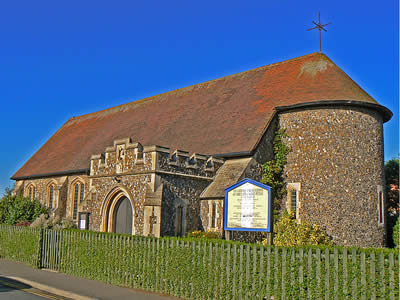
Aldeburgh Roman Catholic Church of Our Lady & St Peter |
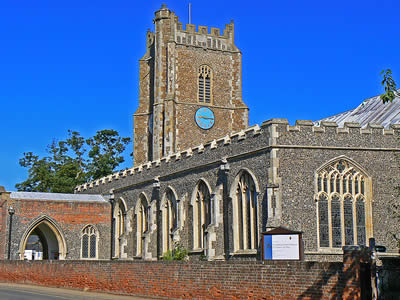
Aldeburgh Parish Church of St Peter and St Paul |
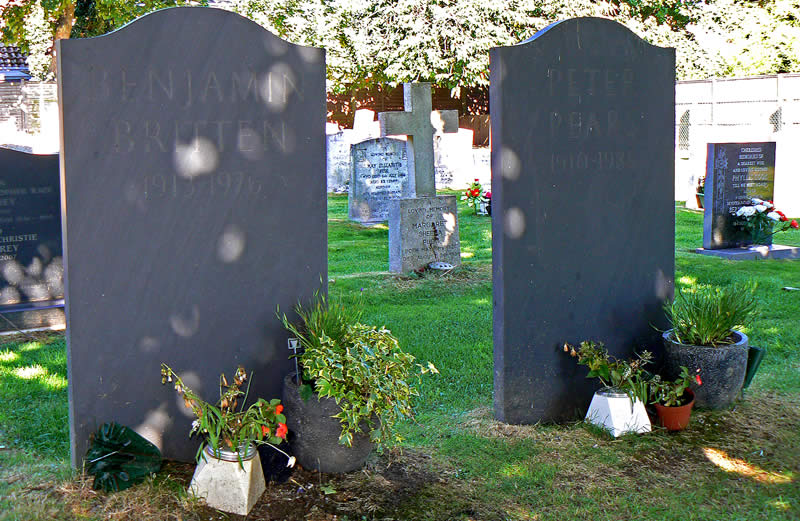
The grave of Benjamin Britten and Peter Pears in the churchyard of Aldeburgh Parish Church |
Benjamin Britten moved to Aldeburgh in 1942. In 1948, himself, Eric Crozier and Peter Pears founded the internationally renowned Aldeburgh Festival of arts, devoted mainly to classical music taking place at nearby Snape Maltings every June. Also since 2006 there is an annual food and drink festival which takes place each September and The Suffolk Craft Society hold an annual themed exhibition in the Peter Pears Gallery over July and August. Britten died in Aldeburgh in 1976. Pears, a noted tenor and Britten's life-long partner, also died in Aldeburgh in 1986. Britten, Peter Pears and Imogen Hoist are all buried in Aldeburgh Churchyard, as is Elizabeth Garrett Anderson, England's first female doctor. |
|
GUIDED TOUR INDEX |
|
|
|
|
|
|
|
|
|
SUFFOLK PICTURE TOURS |
|
|
|
|
|
|
|
|
|
|
|
MAPS TO DOWNLOAD |
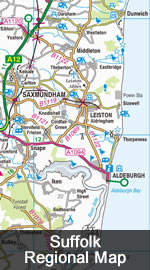 |
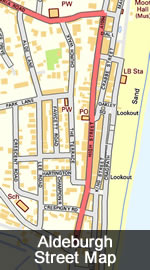 |
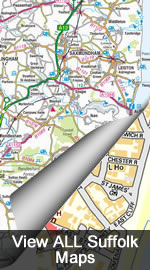 |
TOURIST ATTRACTIONS |
 |
WHERE TO STAY |
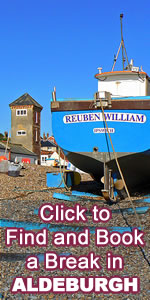 |
SUFFOLK HOLIDAYS |
 |
 |
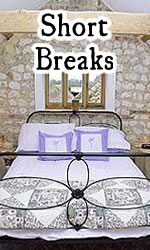 |
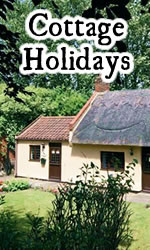 |
MORE OF OUR WEBSITES |
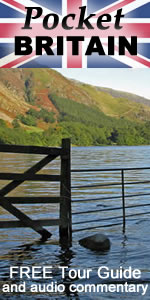 |
 |
 |
|

